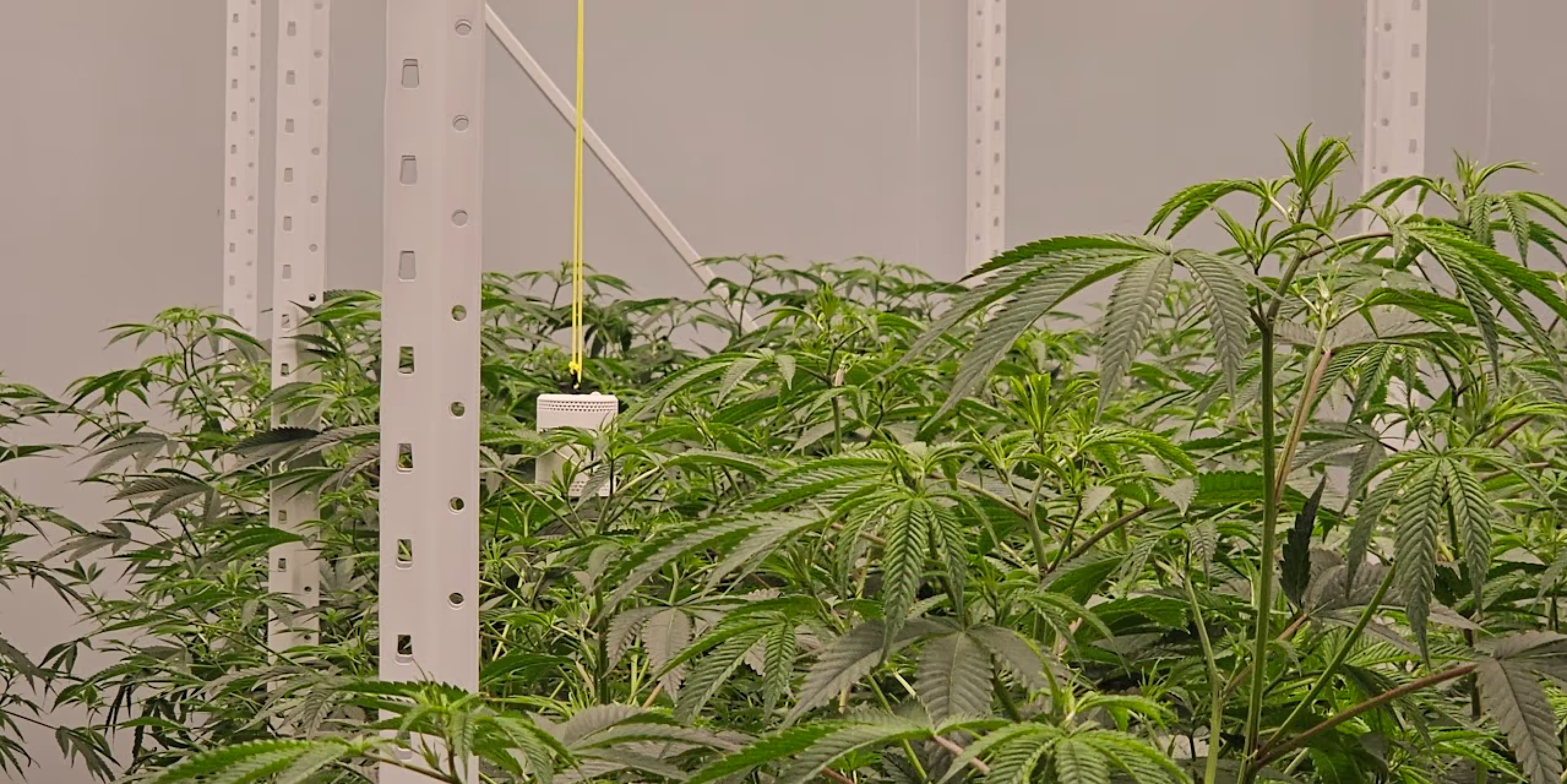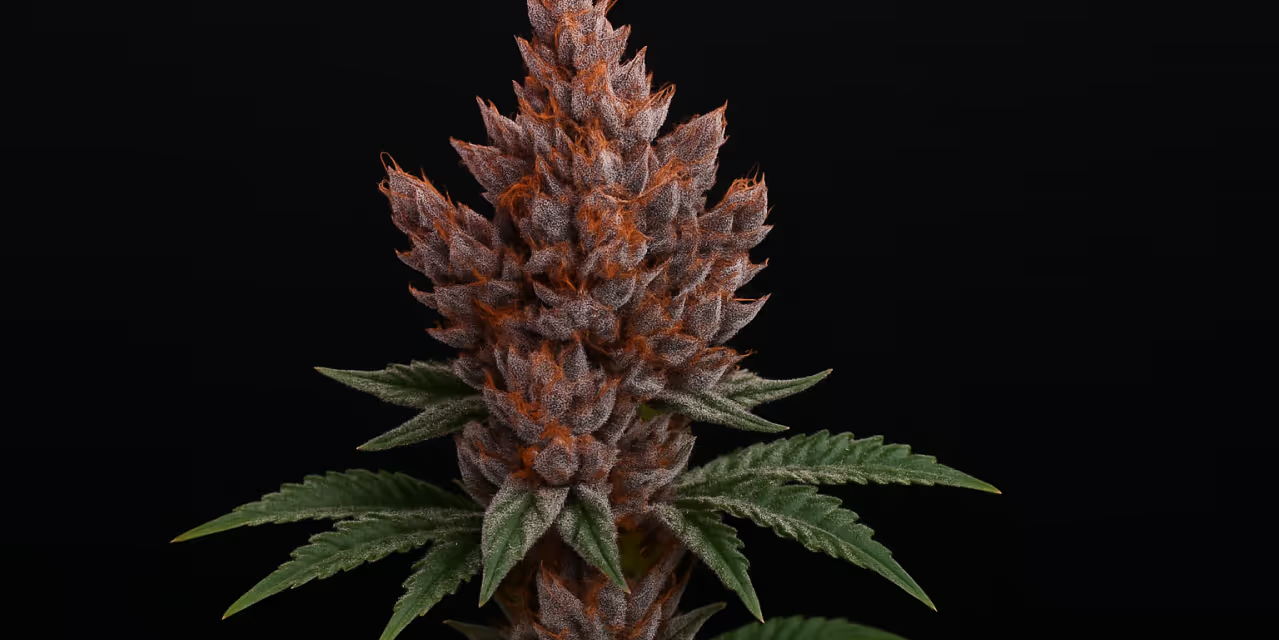Cannabis calcium deficiency. Causes, signs & solutions


Calcium is a vital nutrient.
Without enough calcium, your cannabis will suffer visibly and yield poorly. It’s a common yet serious issue in cannabis cultivation.
If you're seeing signs of weakness in your plants (especially if you’re growing hydroponically or in mediums like coco coir that do not inherently contain calcium), you're likely dealing with a calcium deficiency.
Left unchecked, this deficiency can stunt growth, lead to weak cell walls, and diminish overall plant health, severely affecting your harvest.
In this post, we'll help cannabis growers identify the signs of a calcium deficiency and provide practical solutions to avoid calcium deficiency and correct it.
From understanding its causes to implementing preventative measures, we've got the expertise to help you restore and maintain the health of your plants.
Let's dive into how to spot, treat, and prevent calcium deficiencies to ensure your plants grow robust and healthy.
Disclaimer: Any information given on this site is for educational purposes only. Please ensure if you’re growing cannabis, you’re doing so by the law and subject to appropriate permissions and licenses of the applicable country.
What does calcium do for cannabis?
Calcium is more than just a supplement; it's an essential element and cornerstone of healthy cannabis growth. As a grower, knowing its multifaceted role will help you nurture stronger, more resilient plants.
Here’s how calcium directly influences your plants:
Calcium contributes to cell wall development in cannabis plants. It acts as a binding agent for the walls of cells, providing the necessary structural integrity, rigidity and strength.
This structural support is crucial for your plants' physical robustness and ability to withstand the mechanical stresses of indoor fans or outdoor winds.
Strong cell walls mean your plants are less susceptible to physical damage and can bear the weight of heavy buds during the flowering stage.
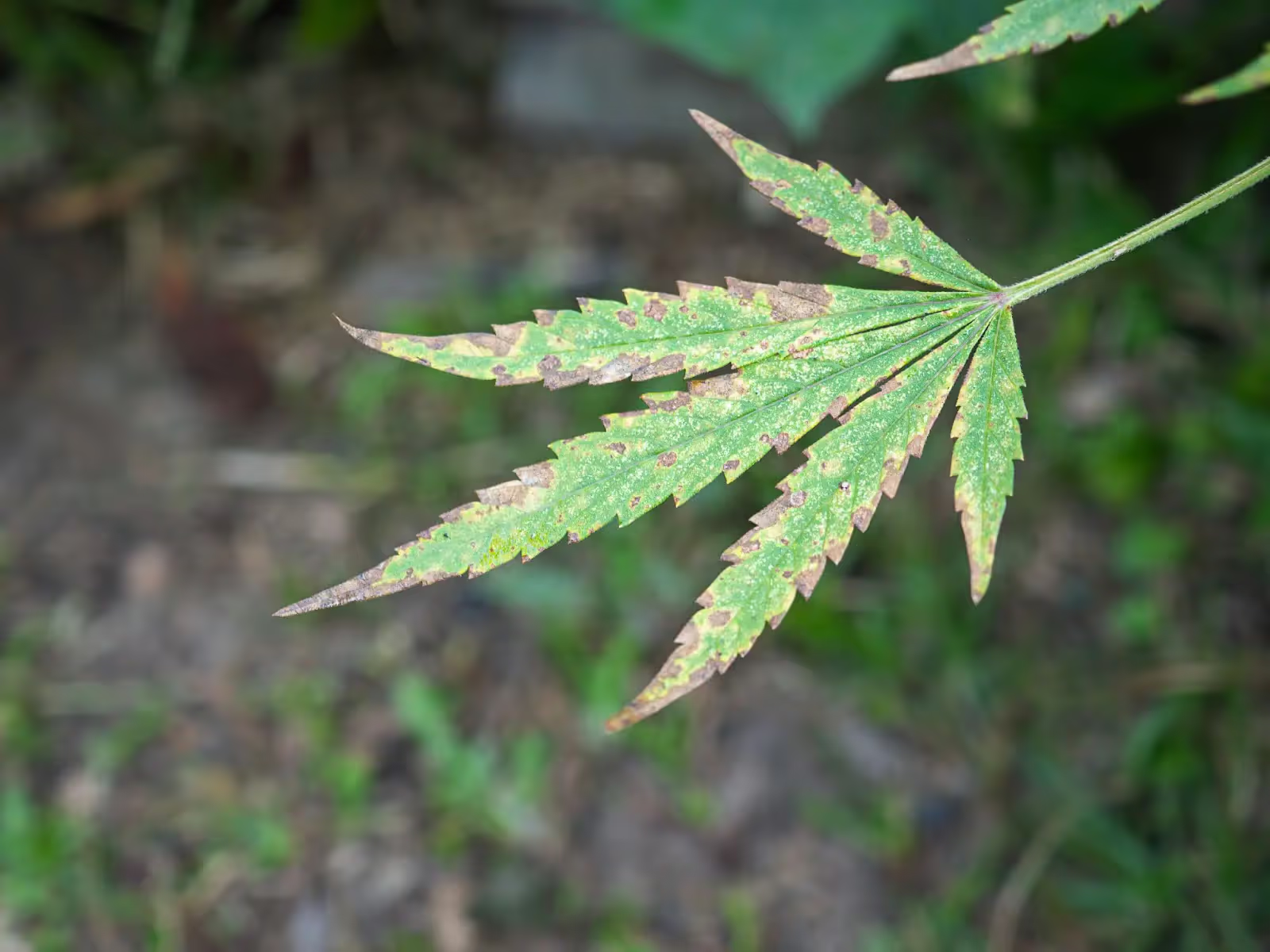
Calcium plays a critical role in metabolic processes and enabling nutrient uptake by helping to regulate the opening and closing of stomata, the tiny pores on leaf surfaces.
These pores are gateways for water and essential nutrients. Proper functioning of stomata ensures that your plants can efficiently absorb carbon dioxide during photosynthesis and manage water loss through transpiration.
Additionally, calcium is involved in the transport of other nutrients within the plant by acting as a carrier, helping to distribute nutrients from the root zone to the leaves and buds where they are most needed.
Maintaining the correct calcium levels is key to preventing several growth issues commonly faced in cannabis cultivation.
A calcium-rich environment helps avoid problems such as heat stress and salt accumulation in the medium you grow in.
It also enhances your plants' resistance to diseases by strengthening their cellular structure and improving their natural defence mechanisms.
For these reasons, it is crucial to ensure that your plants have a steady, accessible supply of calcium throughout their lifecycle.
It promotes healthy growth and maximises your plants' genetic potential, leading to lush, vigorous, and productive crops.

Signs of calcium deficiency in cannabis
Recognising the early calcium deficiency symptoms in your cannabis plants is vital to prevent long-term damage. Here’s what to watch out for:
The most telltale signs of cannabis plant calcium deficiency manifest in the leaves. Initially, you might notice localised brown spots or small brown blisters on younger leaves, which is unusual since most nutrient deficiencies initially affect older leaves.
As the lack of calcium progresses, these spots become more widespread and can lead to necrosis – the death of parts of the leaves. The edges and tips might curl up or appear burnt, a response to the weakened cellular structure.
A lack of calcium also impacts your plants' overall growth and vitality. You may see stunted growth, with younger leaves and new shoots appearing twisted or distorted.
This is particularly troubling during the vegetative stage, when robust growth is crucial. Additionally, the stems may become weak and underdeveloped, unable to support the plant’s weight, making them prone to breaking.
Below the surface, calcium plays a role in maintaining a healthy root system. A deficiency might not directly show on the roots like root rot, but a weakened root system due to poor calcium intake can result in less effective nutrient and water absorption, compounding stress and vulnerability in your plants.
Calcium becomes even more crucial as your plants move into the flowering phase.
Deficiency during flowering can lead to poor bud formation and lower yields. The buds may appear smaller than expected, and the overall bud density can be significantly reduced.
By staying vigilant and catching these symptoms early, you can quickly remedy calcium issues.
Improve your harvest – join the Grow The Best newsletter today!

Common causes of calcium deficiency
Understanding the factors that contribute to calcium deficiency in cannabis plants is essential for effective prevention and management. Here are some common culprits:
pH imbalance
One of the primary causes is an imbalance in pH levels. Cannabis plants thrive in slightly acidic soil with a pH range of 6.0 to 6.8. If you’re growing hydroponically, aim for 5.7 - 6.3.
Calcium becomes less available to the plant when the pH deviates from this optimal range, leading to deficiency symptoms.
A pH that is too low can inhibit calcium uptake, even if the medium contains an adequate amount of calcium.
Excessive nutrient competition
Calcium uptake can be hindered by an excess of other minerals, particularly potassium and magnesium.
When these nutrients are present in high concentrations, they can outcompete calcium for uptake by the plant's roots, leading to deficiency symptoms despite sufficient calcium levels in the soil or nutrient solution.
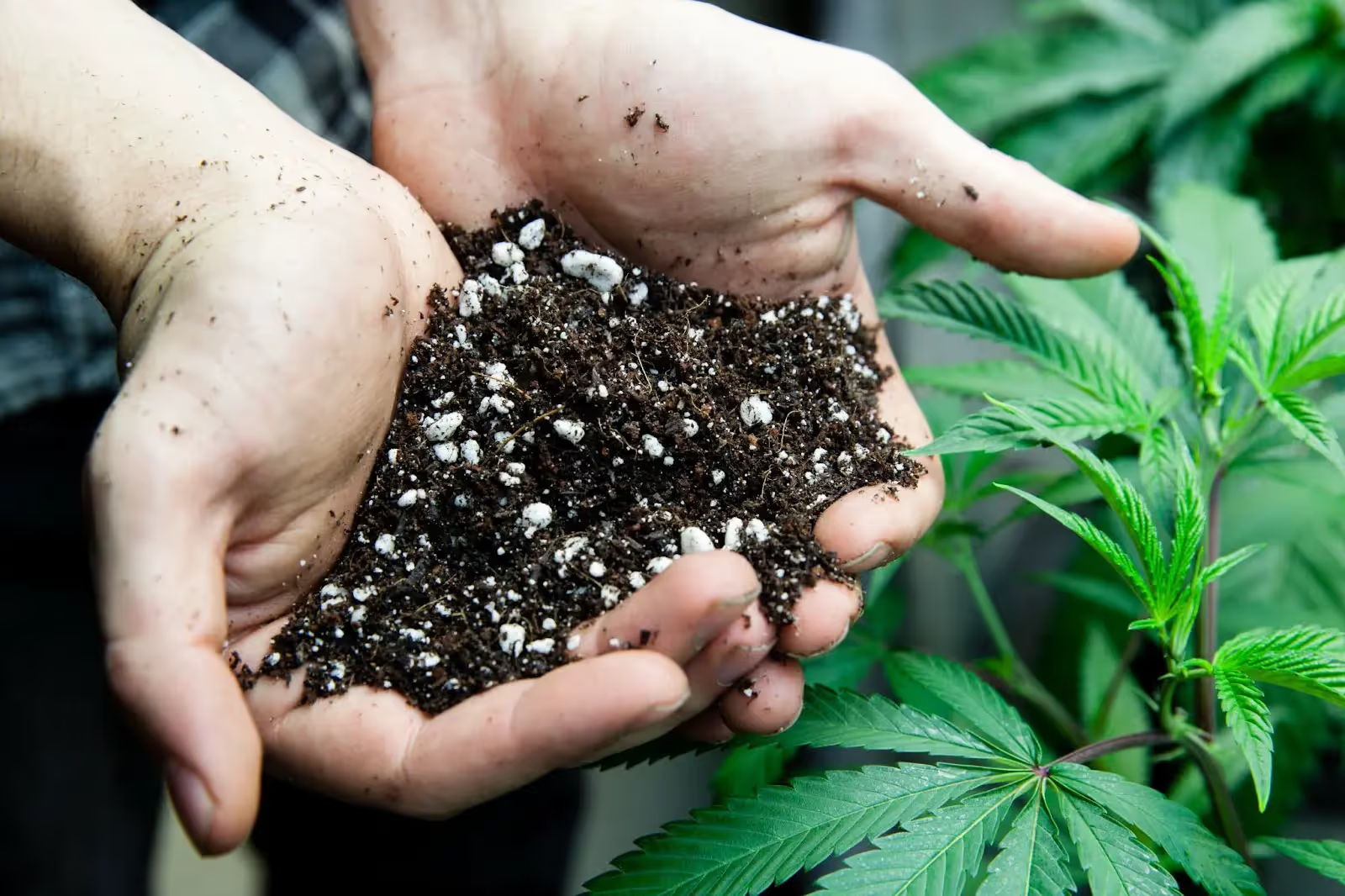
Growing medium
The type of medium used can also influence calcium availability. Hydroponic systems and inert mediums like coco often lack naturally occurring calcium, requiring growers to supplement with calcium-rich fertilisers or additives.
Additionally, soil quality plays a significant role in calcium availability, with poor-quality soil or soil depleted of calcium due to overfertilisation being common causes of deficiency.
Environmental factors
Factors such as temperature fluctuations, humidity levels, and light intensity can indirectly impact calcium uptake by affecting root health and nutrient absorption.
High temperatures, for example, can increase transpiration rates, leading to greater water loss and reduced uptake of nutrients, including calcium.
Water quality
The quality of the water used for irrigation can also contribute to a lack of calcium. Hard tap water, which contains high levels of minerals like calcium and magnesium, can lead to nutrient imbalances if not properly managed.
Conversely, soft water, which lacks these minerals, may require supplementation to ensure adequate calcium levels for plant growth.
Diagnosing and testing for calcium deficiencies
Accurately diagnosing cannabis calcium deficiency symptoms in your plants is crucial for effective treatment. Here are steps and tips to help you identify and confirm this issue:

1. Visual inspection: Start with thoroughly inspecting your plants. Look for the specific signs of calcium deficiency mentioned earlier - brown spots on young leaves and new growth, curled leaf tips, and stunted growth.
Since these symptoms can sometimes overlap with other nutrient deficiencies, it’s essential to consider them in the context of overall plant health and growth patterns.
2. Leaf analysis: For a more precise diagnosis, consider sending a sample of affected leaves to a laboratory for nutrient analysis.
This test can confirm whether the symptoms are indeed due to calcium deficiency or other nutrient imbalances. Leaf analysis is particularly useful if you see widespread symptoms across your crop.
3. Soil and nutrient solution testing: Testing the soil or nutrient solution can provide valuable insights into the pH, calcium concentrations, and other minerals and nutrients.
These tests can help you determine if poor calcium availability is due to pH imbalances or competitive nutrient uptake. Regular testing is recommended to monitor the health of your growing environment and make adjustments as needed.
4. Review growing conditions: Use a grow room monitor like the Grow Sensor to reevaluate your growing conditions, including your watering practices, light setup, temperature control, humidity levels, and VPD. Environmental factors can greatly influence nutrient uptake, so ensuring that these are optimised can help mitigate absorption issues.
5. Historical crop data: If you maintain records of your crop cycles, review them to identify any recurring patterns or issues that might suggest systemic problems with calcium uptake.
The Grow sensor tracks the environmental conditions in your grow space 24/7, helping you troubleshoot and improve with every grow.
This historical data can be invaluable in diagnosing and rectifying chronic issues in your growing operations.
By conducting a comprehensive diagnosis, you’ll confirm whether you’re dealing with calcium deficiency and understand the underlying causes.
This knowledge is essential for applying the correct treatment and preventing future occurrences.

How to fix calcium deficiency in cannabis: Immediate and long-term solutions
Once you've diagnosed calcium deficiency in your plants, it's crucial to address it both immediately and in the long term to ensure healthy growth.
Here are practical steps to correct and prevent calcium deficiency. First, let's look at immediate remedial actions:
Adjust pH levels: If pH imbalance is inhibiting calcium uptake, adjust the pH of your soil or nutrient solution to the ideal range (6.0 to 6.8 for soil and slightly lower for hydroponics). This adjustment can make calcium more available to your plants.
Calcium supplements: Apply calcium-rich supplements such as calcium nitrate or a Cal-Mag (calcium and magnesium) solution. These can be added to your feeding regimen via the nutrient solution or foliar sprays.
Foliar feeding, where the nutrients are sprayed directly on the leaves, can be particularly effective for quick absorption.
Here are some longer-term strategies:
Soil management: Enhance the calcium content of your soil by adding gypsum (calcium sulfate), limestone (calcium carbonate), or crushed eggshells. These amendments can improve soil structure and gradually increase calcium levels.
Regular monitoring: Implement a schedule for regular pH and nutrient testing in your soil or nutrient solutions. This proactive approach will help you maintain the right balance and prevent nutrient lockout situations and other types of nutrient problems.
Balanced fertilisation: Use a balanced fertilisation approach that considers all essential nutrients. Avoid overuse of high-nitrogen fertilisers, which can interfere with calcium uptake. Ensure your fertilisation strategy supports balanced nutrient availability.
Optimise watering practices: Overwatering can leach calcium from the soil while underwatering can limit nutrient uptake. Maintain consistent moisture levels to support optimal nutrient absorption.
Control environmental factors: Ensure that environmental conditions such as lighting, humidity, and temperature are stable and appropriate for cannabis growth. Stress from environmental factors can exacerbate nutrient deficiencies.
By taking these immediate and long-term steps, you can effectively address calcium deficiency in your cannabis plants.

Preventing calcium deficiency
To ensure your cannabis plants remain vibrant and healthy, prevention of calcium deficiency is key. Here are some strategies to keep calcium levels optimal and prevent deficiencies:
1. Regular nutrient management:
- Balanced feeding schedule: Implement a balanced nutrient schedule that provides all essential elements, including calcium. Use a well-rounded fertiliser that includes calcium or supplement with calcium-specific products like Cal-Mag when necessary.
- Monitor nutrient ratios: Keep an eye on the ratios of other minerals that compete with calcium, such as potassium and magnesium. Ensuring these are in balance will prevent competitive inhibition of calcium uptake.
2. Optimal pH maintenance:
- Regular pH testing: Regular testing of your soil or hydroponic solution’s pH is critical. Keeping pH within the optimal range ensures calcium remains available to your plants.
- pH adjustments: Regularly adjust your watering solution or soil amendments to maintain the correct pH. This practice helps to maximise the availability of calcium and other nutrients.
3. Choose the right medium medium:
- Opt for a quality medium: Use a medium that supports good calcium availability. If you're using coco coir or peat, which can bind calcium, consider adding calcium during your regular feeding schedule.
- Amend poor soils: If you're growing in soil, ensure it’s not depleted of calcium. Add organic compost or aged manure to improve soil structure and increase nutrient-holding capacity.
4. Adequate watering practices:
- Consistent watering: Ensure your plants receive consistent, adequate watering. Over-watering can leach essential nutrients like calcium from the soil while under-watering can restrict their uptake.
- Quality of water: Consider the quality of your irrigation water. You might need to add calcium if you use soft water, which typically lacks minerals. If you use hard water, be cautious of potential excess mineral buildup.
5. Environmental control:
- Manage environmental stress: Keep environmental factors such as temperature, humidity, and light intensity within ideal ranges to reduce stress on plants. Stress can affect nutrient uptake, including calcium.
- Ventilation: Good air circulation helps maintain plant health and prevent many issues. Ensure your growing area is well-ventilated to aid in temperature and humidity control.
By adopting these preventative measures, you can significantly reduce the risk of calcium deficiency affecting your cannabis plants.
Takeaways
Calcium is a very important nutrient. Ensuring adequate calcium levels throughout every growth stage is not just about correcting deficiencies; it's about setting the stage for optimal growth and high-quality yields.
Calcium's role in developing strong cell structures and facilitating nutrient uptake underpins your plants' health and productivity. By addressing calcium needs, you enhance every aspect of plant development, from root to flower.
By mastering calcium management in cannabis cultivation, you position yourself to achieve not just a successful harvest but also to ensure the ongoing health and productivity of your cannabis plants.
Remember, a proactive approach to nutrient management, including calcium, is key to avoiding setbacks and maximising the potential of your crop.
Happy growing!
FAQ
What is a good source of calcium for cannabis plants?
Dolomite lime is a good source of calcium for cannabis plants. It provides both calcium and magnesium, which are essential for plant health.
Other effective sources include gypsum (calcium sulfate), calcium nitrate, and eggshells. For hydroponic systems, using a calcium-magnesium supplement (often referred to as Cal-Mag) is particularly beneficial.
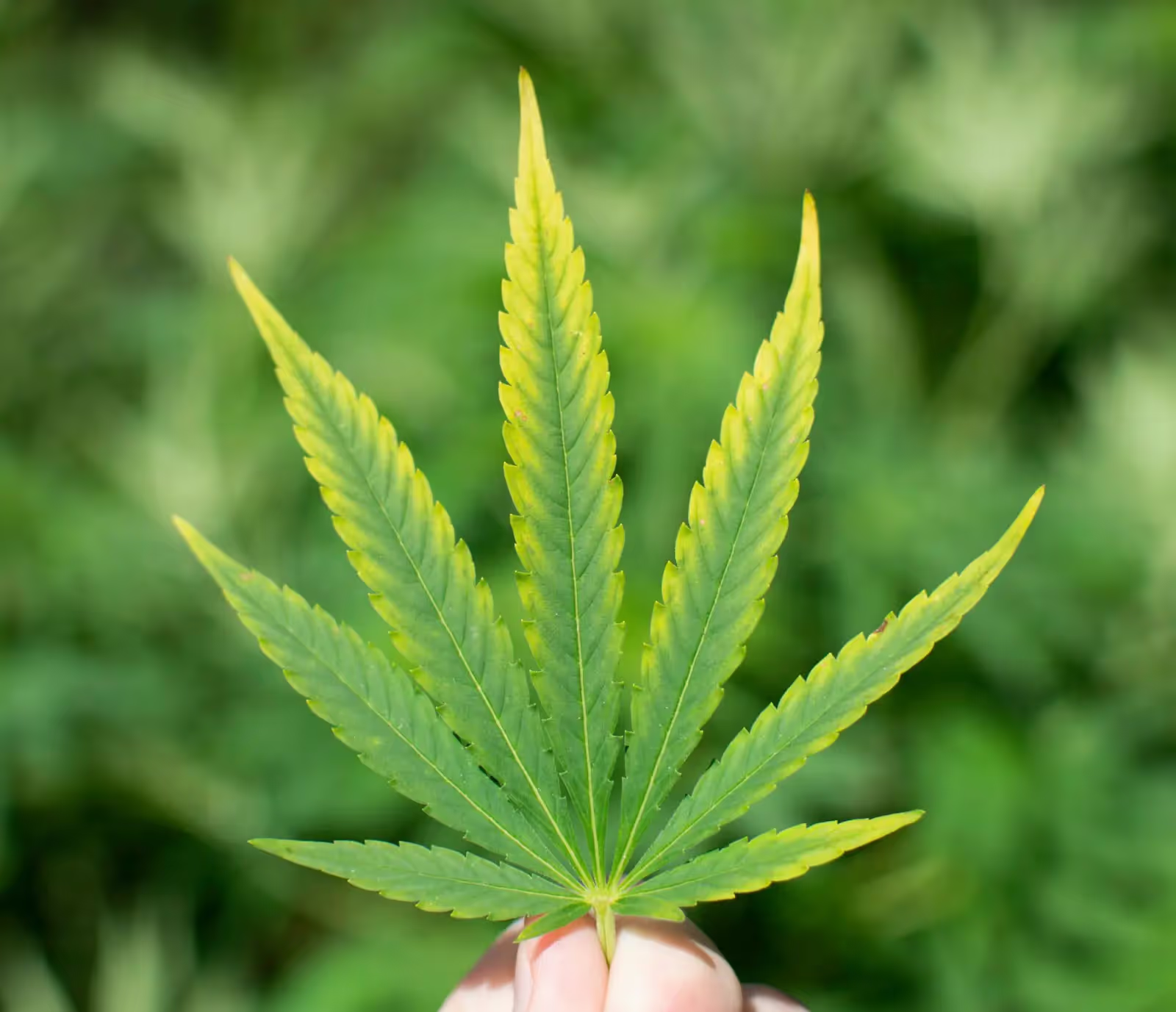
What does a cal mag deficiency look like in cannabis?
A cannabis calcium magnesium deficiency typically manifests as interveinal chlorosis, where the space between the leaf veins turns yellow while the veins remain green, predominantly on newer or upper leaves.
When your plants are experiencing calcium and magnesium deficiencies, you might also notice purple or reddish discolouration on the undersides of the leaves and along the stems.
Additionally, as growth slows, leaves may become thin and curl at the edges, and the plant's overall development appears stunted.
Can overwatering cause calcium deficiency?
Yes, overwatering can cause calcium deficiency in plants. Excessive water flushes nutrients from the soil, reducing calcium availability and hindering the plant's ability to absorb this essential nutrient efficiently.
What does calcium toxicity look like in cannabis?
Calcium toxicity in cannabis plants (too much calcium) usually manifests as a general stunting of growth due to nutrient imbalances. Excess calcium interferes with the uptake of other key nutrients like potassium and magnesium. You may also see reduced root development and darker-than-usual, very compact leaves with excessive calcium.
Master your gardening – sign up for the Grow The Best newsletter!









.avif)


